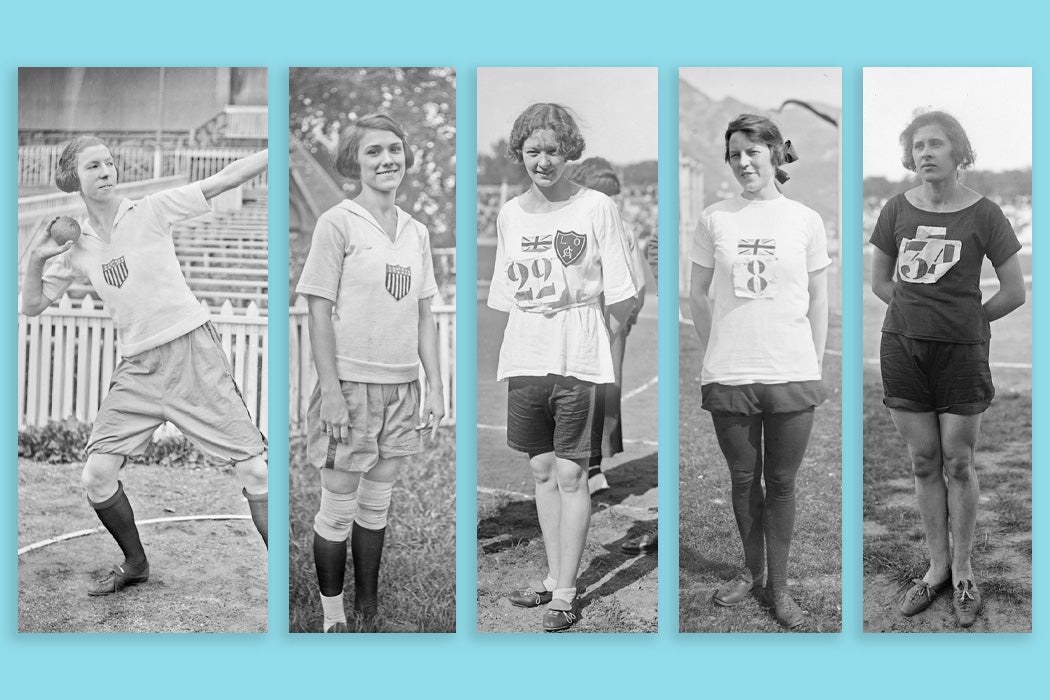Though women track and field athletes have made incredible showings on the world stage, their presence wasn’t always welcome in the sport. In the 1920s, women’s athletics weren’t particularly encouraged, explains librarian Jane P. Tuttle.
“Athletic talent mattered little for women when wife and mother were their accepted societal roles,” Tuttle writes. And even in collegiate athletics, the focus was more on making women fit to fill societal roles than to create superstars. As one college administrator noted in 1925, “[o]ne of the chief ends of a college for women is to fit them to become the makers of homes.”
In addition to objections based on societal expectations, there were also those embedded in the discourse on women’s health, such as warnings from some educators that physical activity, particularly demanding track and field events, were hazardous to women’s endocrine systems. Women were advised to avoid the sport during their periods for fear of damaging the uterus. And the emotional stress of competition was even worse, a recipe for “sowing the seed for a nervous breakdown.”
But despite this, women were still eager to compete. Though the International Olympic Committee wouldn’t add women’s track and field to the Olympics until 1928, the Federation of Women’s Sports Societies of France (Fédération des Sociétés Féminines Sportives de France), a women’s athletics organization, launched the First International Track Meet for Women (Premiers Jeux Olympiques Féminins) in 1922. The event brought women from five countries to compete in Paris. Although women athletes in France had been asserting their right to compete, things were a bit different in the United States. The US was invited to send a team, but the the Amateur Athletic Union, which set standards for sports for all genders, declined to support a team.
Undaunted, women’s athletics supporter and founder of the New Haven College Physiotherapy, Dr. Harry Eaton Stewart, held tryouts in New York on May 13, 1922, some in person and some through “telegraphic meets” where the competitors would compete at their home track and the results would be sent to a central location. As Tuttle describes, the event “attracted the largest number of women athletes to a track and field meet in the United States at that time,” with 102 women competing. Ultimately, fifteen women were picked, including Lucile Godbold, an athlete from South Carolina who would elevate women’s sports for years to come.
Dr. Stewart set tough standards, Tuttle explains, with a ten o’clock curfew and a strict diet with no “sodas, heavy pastries, [or] fried foods.” The plan worked, as Godbold set a record in the shotput, while her teammate, Camille Sabie, “set the world’s record in the 100-yard hurdles, won the standing broad jump, and placed third in the running broad jump.”
Weekly Newsletter
Though Godbold didn’t do as well as hoped in the meet, when she returned to South Carolina, her reputation grew. She began teaching, becoming the director of athletics at Columbia College, a position she held for nearly sixty years. Her showing in Paris inspired other women, with the college’s newspaper asking,
when she told us about her experiences before and after going to Paris, did it not make your blood tingle with determination to get to work on the athletic field? Deep down in your hearts, have you not resolved to try to go to Paris for the same reason she did?
Godbold was just one athlete, but the First International Track Meet for Women changed the sport for her and so many after her. As Tuttle notes, the event “helped to define more than just the individual competitors, for it was a first step in the acceptance and phenomenal growth of women’s track and field in the United States.”







